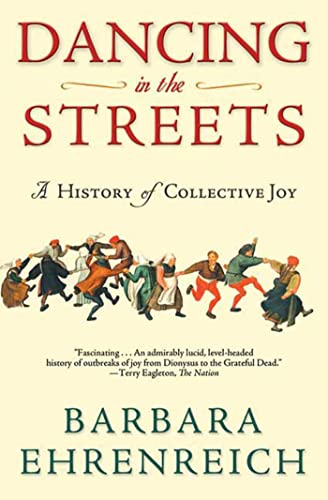Dancing in the Streets
A History of Collective Joy
Barbara Ehrenreich
BOOK REVIEW

In the vast landscape of literature, few works dare to unravel the intricate tapestry of joy and collective human experience as bravely as Dancing in the Streets: A History of Collective Joy by Barbara Ehrenreich. This book is a mesmerizing exploration of how communal elation, from festivals to spontaneous celebrations, transcends the mundane existence of our daily lives. What if the very act of joy itself is essential to our humanity, a primal instinct that has shaped societies through the ages?
Ehrenreich delves into the pulse of history, illuminating moments when humans came together in ecstatic unity, from ancient rituals to modern-day flash mobs. She forces you to contemplate: why do we often reserve joy for the private corners of our lives? This work is not merely a recounting of joyous events; it is a clarion call to rekindle the lost art of collective revelry in an era that often feels fractured and lonely.
With sharp wit and empirical rigor, Ehrenreich examines how joy can challenge the social order. The robust chapters span the origins of communal celebrations-think of the raucous feasts of the Middle Ages or the electric energy of 1960s dance parties-highlighting their significance not just in personal joy but in the fabric of community and societal change. Through her vivid prose, you can almost hear the laughter, feel the rhythm of feet shuffling through crowded streets, and taste the exhilaration mingling in the air.
Critics and readers alike have ardently debated the impact of Ehrenreich's observations. Some argue that her insistence on the necessity of communal joy feels idealistic, perhaps naive, in a world increasingly driven by cynicism and isolation. Yet, this is precisely where her brilliance shines. She invites you to reflect on your own experiences-those moments in life that seemingly suspend the weight of the world. What kept us from dancing in the streets, and what makes us shy away from connection today?
As you flip through the pages of this adventurous narrative, you may encounter anecdotes that resonate deeply, forcing you to confront your own emotional stifling amid the hustle of contemporary existence. The dance floor is not just a place for physical expression; it is an embodiment of human connection, solidarity, and the collective spirit that has the power to redefine societal norms.
Dancing in the Streets permeates more than just the archives of joyous events; it serves as a poignant reminder of the importance of joy as a tool for political and social liberation. The book sheds light on how collective joy has spurred movements, sparked revolutions, and integrated diverse cultures under the banner of happiness. If dancing can be a revolt, as Ehrenreich avows, why are we not more engaged?
Readers have expressed a mixture of admiration and contemplation over Ehrenreich's thesis. Some have been moved to reclaim joy in their own lives, while others ponder the role of capitalism and modernity in suppressing such vital expressions. It's a conversation worth having-one that many would rather ignore in the face of day-to-day struggles.
As you navigate through this tantalizing exploration, remember that Dancing in the Streets is not just a history; it is a manifesto for rediscovering community, reaching out, and engaging with the world around you in unbridled enthusiasm. The book implores you to cast aside the shadows, grab a partner, and join in the dance of life. So, will you heed the call to joy, or will you remain a spectator? The choice is yours, but the dance floor awaits. 🌟
📖 Dancing in the Streets: A History of Collective Joy
✍ by Barbara Ehrenreich
🧾 336 pages
2007
#dancing #streets #history #collective #barbara #ehrenreich #BarbaraEhrenreich